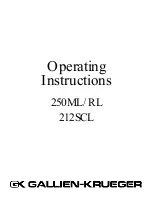
2-4
2 Operational Theory
Model 3300
TA
Teledyne Analytical Instruments
Fortunately, Dalton's Law confirms that every gas in a mixture contributes
the same pressure to the mixture that it would exert if it were alone in the same
amount in that same volume. This means that as long as the total pressure of the
sample remains constant, the mixture can change, but the diffusion of the oxygen
will be affected only by the concentration of the oxygen.
For this reason, the sample system supplying sample gas to the cell should
be designed to keep the pressure on the diffusion membrane constant.
2.2.5 Calibration Characteristics
Given that the total pressure of the sample gas on the surface of the Micro-
Fuel Cell input is constant, a convenient characteristic of the cell is that the
current produced in an external circuit of constant impedance is directly propor-
tional to the rate at which oxygen molecules reach the cathode, and this rate is
directly proportional to the concentration of oxygen in the gaseous mixture. In
other words it has a linear characteristic curve, as shown in Figure 2-2. Measur-
ing circuits do not have to compensate for nonlinearities.
Also, since there is zero output in the absence oxygen, the characteristic
curve has an absolute zero. The cell itself does not need to be zeroed.
As the cell reaches the end of its useful life, the slope seen in Figure 2-2
decreases. In the Model 3300TA, the slope is monitored. If the inverse of the
slope:
Span Value (ppm) / Cell Output (nA)
is over 4.447 ppm/nA, a sensor failure alarm is triggered, indicating that the cell
should be replaced.
Figure 2-2. Characteristic Input/Output Curve for a Micro-Fuel Cell















































